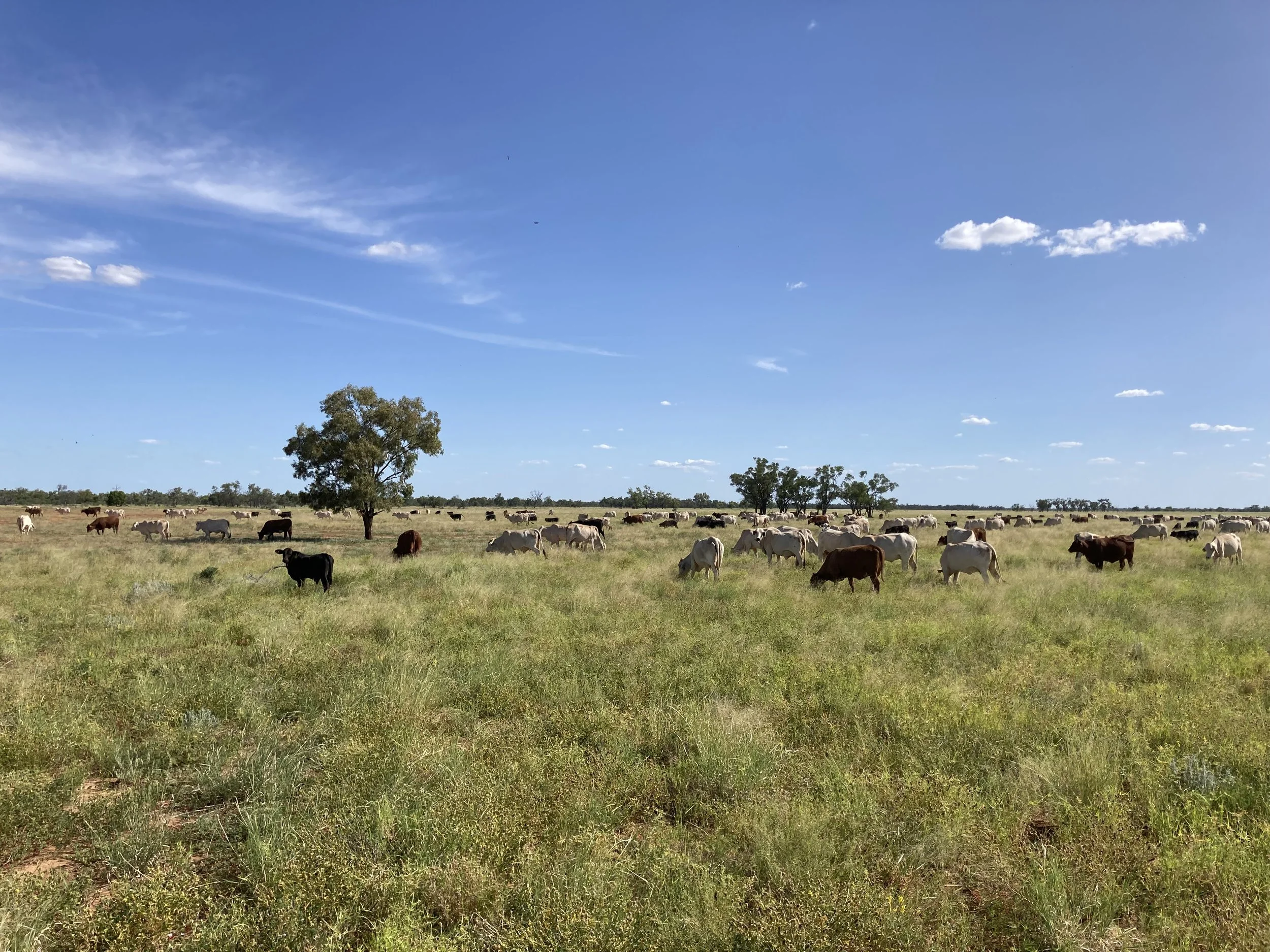
Australia
SLM Partners invests in farmland in Australia with a focus on regenerative grazing, annual crops, permanent crops and carbon credits.
Our first strategy, SLM Australia Livestock Fund, was launched in 2012. This fund invested over AU$75 million across rangeland properties in Queensland and New South Wales with a focus on grass-fed beef cattle production. At its peak, the strategy had over 450,000 hectares of land under management, implementing holistic planned grazing and establishing innovative carbon projects.
In 2023, Agri Carbon Investments was formed as a joint venture between SLM Partners and Impact Ag Partners, a leader in regenerative farm management and natural capital project development in Australia. The Agri Carbon Investments platform invests in mixed farming operations in Eastern Australia where there are opportunities to implement regenerative practices, store carbon and enhance natural capital.
Agri Carbon Investments has invested over AU$150m+ on behalf of a global family office and developed a diversified portfolio of farms combining annual crops, permanent crops, livestock and carbon credit projects.

Regenerative Grazing
Well-managed livestock play an important role in regenerative agriculture. Across our properties, SLM Partners uses a rotational grazing practice known as ‘holistic planned grazing’. This involves dividing land into smaller paddocks, putting cattle in larger herds, and moving them frequently across the landscape to allow access to fresh grass. This mimics the behaviour of grazing animals in natural environments.
The adoption of holistic planned grazing has the potential to regenerate the land by increasing vegetation cover, improving soil health, improving water cycles and enhancing biodiversity. Well-managed grasslands can also store significant amounts of additional carbon. Where possible, we also integrate grazing animals into grain crop rotations and orchards in order to control weeds and recycle nutrients.
All our cattle and sheep are raised on pasture in a natural environment. Our farm staff use Low Stress Stock Handling techniques when working with animals to reduce stress and ensure the highest animal welfare standards are met.
Annual & Permanent Crops
Our properties in Australia grow a range of annual crops, including wheat, sorghum, barley, oats, chickpeas, beans and cotton, as well as permanent crops such as macadamias and pecans.
Across our cropland, SLM Partners adopts regenerative farming practices, including minimising tillage and soil disturbance, planting cover crops and using more diverse crop rotations. The farms seek to reduce synthetic fertilisers by relying instead on biological soil amendments, such as compost, compost tea or manure. We also adopt integrated pest management techniques to reduce or eliminate chemical pesticides.
Carbon Credits
Australia has one of the most developed carbon markets in the world for agriculture and forestry, creating opportunities for landowners to benefit from new revenue streams.
SLM Partners has established successful carbon projects across more than 200,000 hectares of land in Australia, promoting the regeneration of native Mulga woodland through better grazing management. Since 2016, we have generated and sold over 1.8 million Australian Carbon Credit Units (ACCUs) under Australia’s regulated carbon program. The projects we have established so far are forecasted to sequester more than 4.5 million tCO2-eq over 25 years.
Across our mixed farmland properties, SLM Partners is developing more carbon projects and diversifying across project types, including soil carbon sequestration, environmental plantings, and farm forestry carbon projects.








